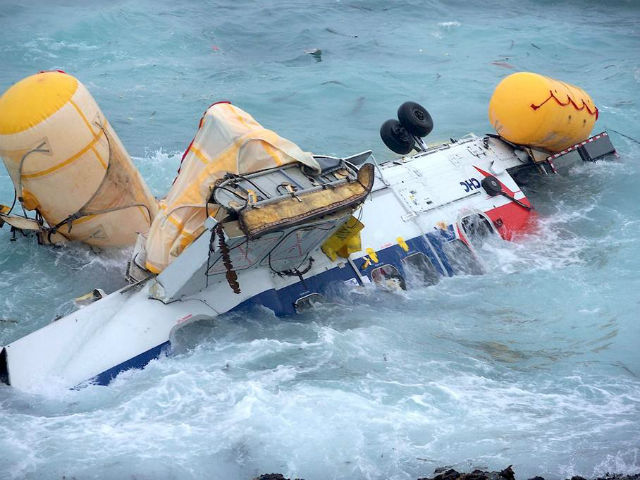Investigators have determined that the Eurocopter AS332L2 Super Puma involved in a fatal accident off the Shetland Isles on 23 August had entered a vortex ring state, making its rate of descent uncontrollable before it hit the sea surface.
In its second interim report into the crash, the UK Air Accidents Investigation Branch again confirms that the helicopter (G-WSNB) operated by CHC Scotia exhibited no technical faults on its ill-fated approach to Sumburgh's runway 09.
The captain was flying the localiser/DME approach with the autopilot in heading/altitude mode. The report says that passing 3nm (6km) from the runway threshold, the aircraft's height profile was correct for the distance remaining.
However, the captain then allowed the aircraft's speed to decay gradually through the 80kt (148km/h) he said was his target. The rate of descent was too high, and the co-pilot did not notice the speed decay until it had reduced to 43kt, at the decision height of 300ft (91m).

ShetNews/Peter Hutchinson
The captain began to react to the speed decay at about 30kt. By then the height was 240ft, with the aircraft at a high rate of descent, but the power increase he demanded did not have the desired effect.
The report explains: "The combination of the nose-high attitude, low airspeed, high rate of descent and high power placed the helicopter in a vortex-ring state entry condition during the final stages of the flight.
"The manufacturer's modelling indicated that, in this condition, the reduced helicopter performance, together with the limited height available meant that the impact with the sea was unavoidable."
Among the 18 people on the helicopter, four died – but the report says they were not killed by the impact. The AAIB also calls for Sumburgh airport to have water-borne rescue services available in the future.
Source: FlightGlobal.com
















